Entry Database : PDB / ID : 4gt5Title Crystal structure of the inactive TrkA kinase domain High affinity nerve growth factor receptor Keywords / Function / homology Function Domain/homology Component
/ / / / / / / / / / / / / / / / / / / / / / / / / / / / / / / / / / / / / / / / / / / / / / / / / / / / / / / / / / / / / / / / / / / / / / / / / / / / / / / / / / / / / / / / / / / / / / / / / / / / / / / / / / / / / / / / / / / / / / / / / / / / / / / / / / / / / / Biological species Homo sapiens (human)Method / / / Resolution : 2.398 Å Authors Artim, S.C. / Lemmon, M.A. Journal : Biochem.J. / Year : 2012Title : Assessing the range of kinase autoinhibition mechanisms in the insulin receptor family.Authors : Artim, S.C. / Mendrola, J.M. / Lemmon, M.A. History Deposition Aug 28, 2012 Deposition site / Processing site Revision 1.0 Sep 26, 2012 Provider / Type Revision 1.1 Oct 3, 2012 Group Revision 1.2 Nov 21, 2012 Group Revision 1.3 Sep 13, 2023 Group / Database references / Refinement descriptionCategory chem_comp_atom / chem_comp_bond ... chem_comp_atom / chem_comp_bond / database_2 / pdbx_initial_refinement_model / struct_ref_seq_dif Item / _database_2.pdbx_database_accession / _struct_ref_seq_dif.details
Show all Show less
 Open data
Open data Basic information
Basic information Components
Components Keywords
Keywords Function and homology information
Function and homology information Homo sapiens (human)
Homo sapiens (human) X-RAY DIFFRACTION /
X-RAY DIFFRACTION /  SYNCHROTRON /
SYNCHROTRON /  MOLECULAR REPLACEMENT / Resolution: 2.398 Å
MOLECULAR REPLACEMENT / Resolution: 2.398 Å  Authors
Authors Citation
Citation Journal: Biochem.J. / Year: 2012
Journal: Biochem.J. / Year: 2012 Structure visualization
Structure visualization Molmil
Molmil Jmol/JSmol
Jmol/JSmol Downloads & links
Downloads & links Download
Download 4gt5.cif.gz
4gt5.cif.gz PDBx/mmCIF format
PDBx/mmCIF format pdb4gt5.ent.gz
pdb4gt5.ent.gz PDB format
PDB format 4gt5.json.gz
4gt5.json.gz PDBx/mmJSON format
PDBx/mmJSON format Other downloads
Other downloads 4gt5_validation.pdf.gz
4gt5_validation.pdf.gz wwPDB validaton report
wwPDB validaton report 4gt5_full_validation.pdf.gz
4gt5_full_validation.pdf.gz 4gt5_validation.xml.gz
4gt5_validation.xml.gz 4gt5_validation.cif.gz
4gt5_validation.cif.gz https://data.pdbj.org/pub/pdb/validation_reports/gt/4gt5
https://data.pdbj.org/pub/pdb/validation_reports/gt/4gt5 ftp://data.pdbj.org/pub/pdb/validation_reports/gt/4gt5
ftp://data.pdbj.org/pub/pdb/validation_reports/gt/4gt5

 Links
Links Assembly
Assembly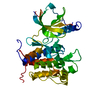
 Components
Components Homo sapiens (human) / Gene: MTC, NTRK1, TRK, TRKA / Plasmid: pFastBac / Production host:
Homo sapiens (human) / Gene: MTC, NTRK1, TRK, TRKA / Plasmid: pFastBac / Production host: 
 X-RAY DIFFRACTION / Number of used crystals: 1
X-RAY DIFFRACTION / Number of used crystals: 1  Sample preparation
Sample preparation SYNCHROTRON / Site:
SYNCHROTRON / Site:  APS
APS  / Beamline: 23-ID-B / Wavelength: 1.03321 Å
/ Beamline: 23-ID-B / Wavelength: 1.03321 Å Processing
Processing MOLECULAR REPLACEMENT
MOLECULAR REPLACEMENT Movie
Movie Controller
Controller



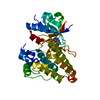
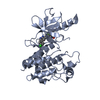

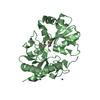

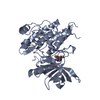

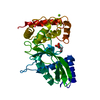
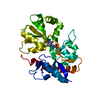

 PDBj
PDBj










